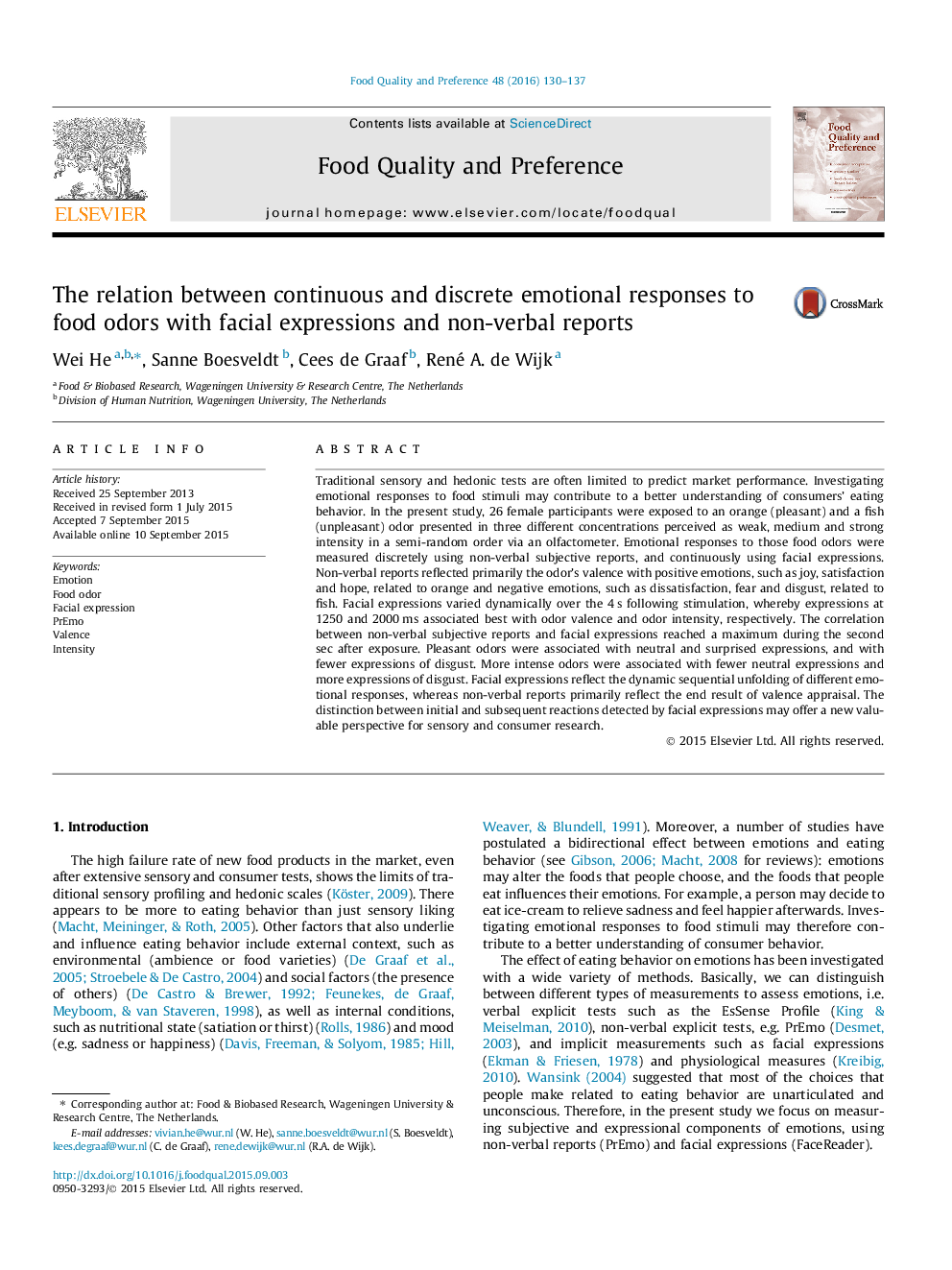| کد مقاله | کد نشریه | سال انتشار | مقاله انگلیسی | نسخه تمام متن |
|---|---|---|---|---|
| 6261189 | 1290566 | 2016 | 8 صفحه PDF | دانلود رایگان |
- We compared continuous and discrete measures for emotion.
- We found the dynamic sequential unfolding of different emotional responses reflected by facial expressions.
- We found that facial expressions were dominated by odor pleasantness during certain time periods.
Traditional sensory and hedonic tests are often limited to predict market performance. Investigating emotional responses to food stimuli may contribute to a better understanding of consumers' eating behavior. In the present study, 26 female participants were exposed to an orange (pleasant) and a fish (unpleasant) odor presented in three different concentrations perceived as weak, medium and strong intensity in a semi-random order via an olfactometer. Emotional responses to those food odors were measured discretely using non-verbal subjective reports, and continuously using facial expressions. Non-verbal reports reflected primarily the odor's valence with positive emotions, such as joy, satisfaction and hope, related to orange and negative emotions, such as dissatisfaction, fear and disgust, related to fish. Facial expressions varied dynamically over the 4Â s following stimulation, whereby expressions at 1250 and 2000Â ms associated best with odor valence and odor intensity, respectively. The correlation between non-verbal subjective reports and facial expressions reached a maximum during the second sec after exposure. Pleasant odors were associated with neutral and surprised expressions, and with fewer expressions of disgust. More intense odors were associated with fewer neutral expressions and more expressions of disgust. Facial expressions reflect the dynamic sequential unfolding of different emotional responses, whereas non-verbal reports primarily reflect the end result of valence appraisal. The distinction between initial and subsequent reactions detected by facial expressions may offer a new valuable perspective for sensory and consumer research.
Journal: Food Quality and Preference - Volume 48, Part A, March 2016, Pages 130-137
